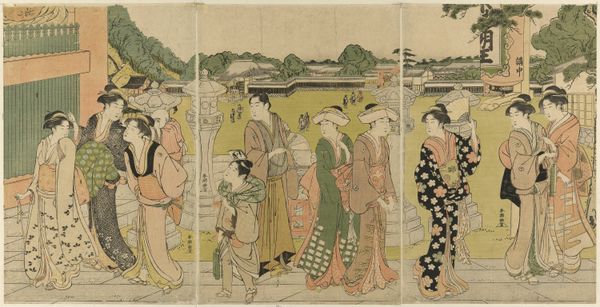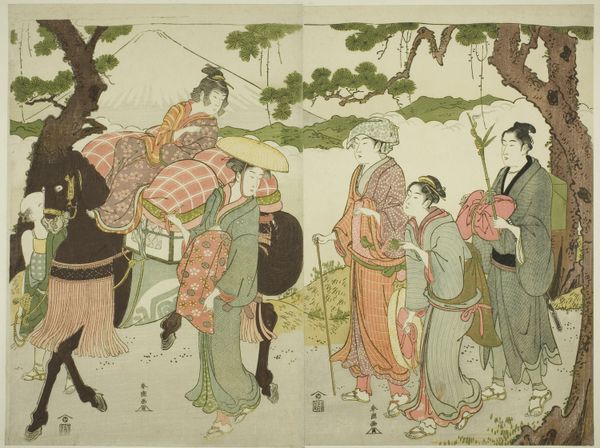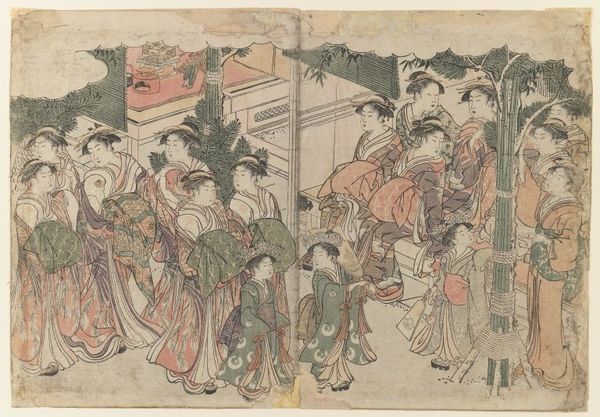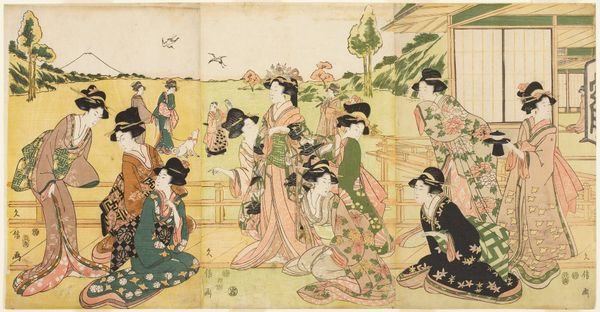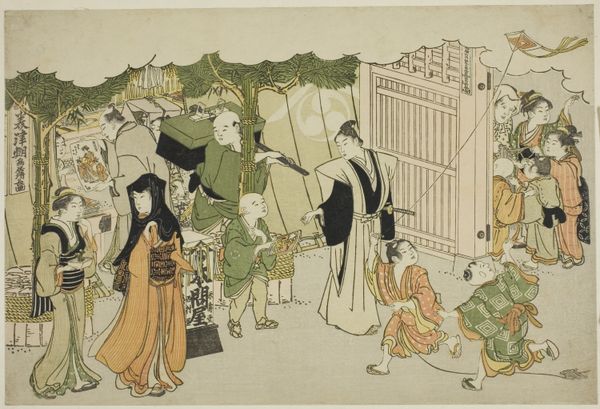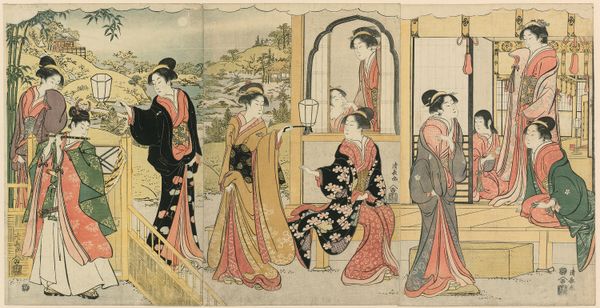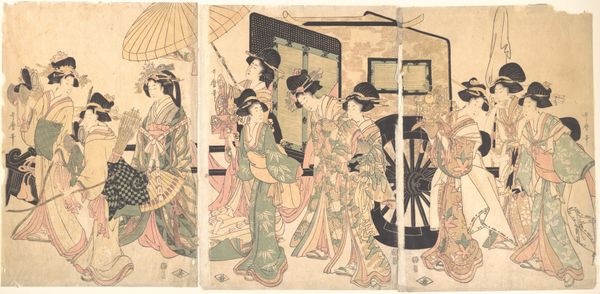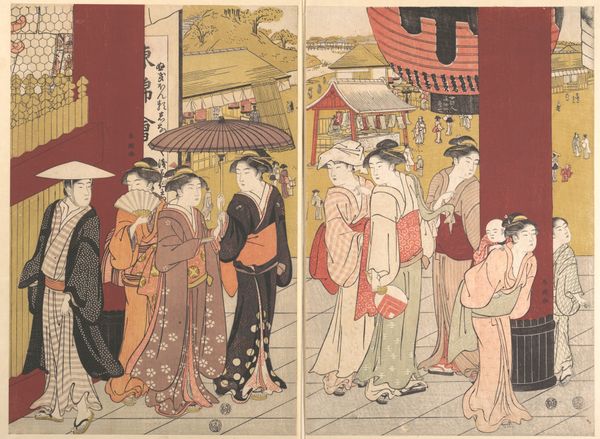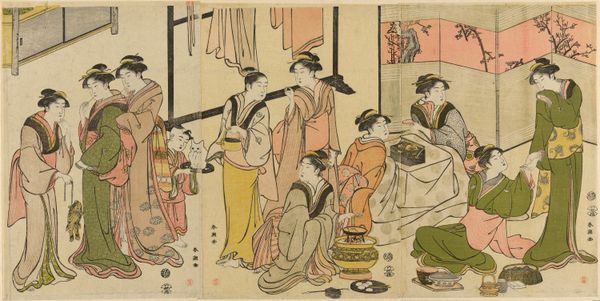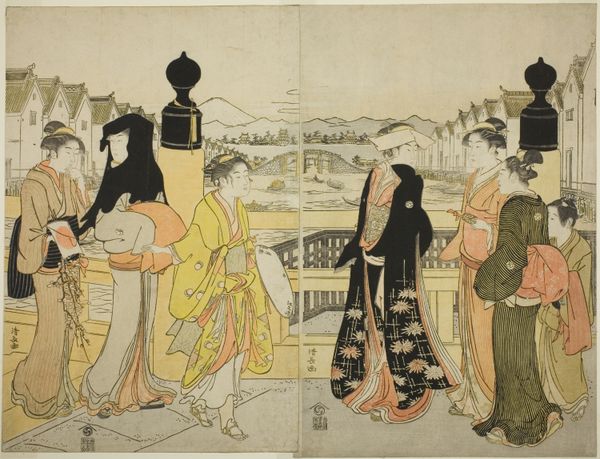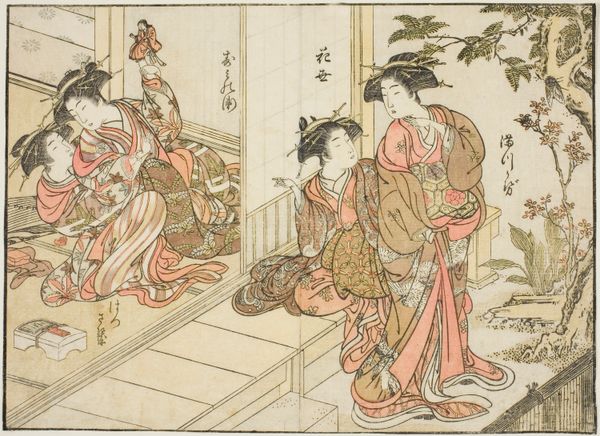
The First Garments of the New Year (Kiso hajime), from the illustrated book "Colors of the Triple Dawn (Saishiki mitsu no asa)" c. 1787
0:00
0:00
#
portrait
# print
#
asian-art
#
ukiyo-e
#
genre-painting
Dimensions: 25.2 × 38.0 cm
Copyright: Public Domain
Curator: Good morning. I am delighted to introduce you to Torii Kiyonaga's print, “The First Garments of the New Year,” also known as “Kiso hajime,” from the illustrated book "Colors of the Triple Dawn.” Created around 1787, this beautiful work resides here at the Art Institute of Chicago and is a stunning example of ukiyo-e artistry. Editor: It’s instantly engaging! There's such a delicate and ephemeral feel to the scene. The light palette gives it a sense of grace and perhaps, fleeting joy. The figures almost seem to float across the paper, clad in the most incredible fabrics! Curator: Indeed. As a genre painting, this ukiyo-e print captures a vibrant snapshot of the social customs and rituals of the era, with a particular focus on women. Note the exquisite details of their kimono— the layers, the patterns—reflecting social status and the aesthetics of the period. Kiyonaga had a great understanding of female beauty ideals within Edo society. Editor: I love how each woman holds her own personality, despite the artistic conventions of beauty. They appear caught in mid-conversation. What narrative is embedded here? It all feels so poised, elegant and also...staged? Like we're catching a performance or public ritual. Curator: That tension you perceive, I think it points to how such images were constructed and consumed within the cultural and social spheres of the time. Ukiyo-e prints circulated widely, so this scene certainly performed a role beyond the merely descriptive, presenting idealised images for public view. It likely shaped the perception of women and celebration in Japan. Editor: You know, stepping back I love the lack of depth. That compressed picture plane pushes the scene right up against the viewer! The stylized shapes, patterns and rhythmic gestures add to that sense of theatricality too. I wonder, if this image had more depth if that would add or detract from it? I feel like the answer to this question rests on who or what this art was made for, wouldn't you agree? Curator: I agree entirely, an exciting thing to consider. Looking closer, it's clear the setting—marked by the bamboo decoration—indicates this "first garments" tradition happens indoors. Note too, how the setting frames and contains them as social beings. It all prompts many thoughts regarding the intersections of public, private, tradition, and modernity! Editor: This artwork leaves me buzzing with questions, doesn't it you? Now I wish I could just float among these lovely kimono-clad women. To think, what new adventures and new threads they'd weave for themselves next!
Comments
No comments
Be the first to comment and join the conversation on the ultimate creative platform.
